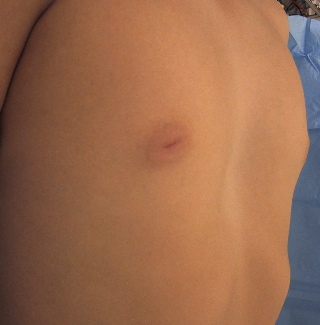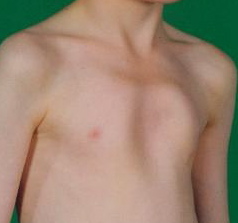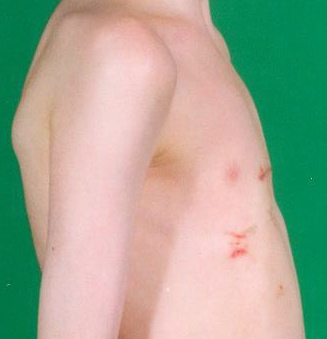In severe cases the xiphisternum virtually touches the vertebrae, displacing the heart laterally, usually to the left. The excavatum deformity behaves as though there are attachments to the tendinous diaphragm and even the vertebrae. As the child grows around this attachment, the sternum and cartilages are drawn in. Eventually the ends of the ribs are drawn in and the chest cavity becomes elongated and flattened. The clavicular heads are drawn in when the deformity is severe. The appearance is of a tall thin male with a flattened elongated chest and a concavity at the lower end of the manubrium.


